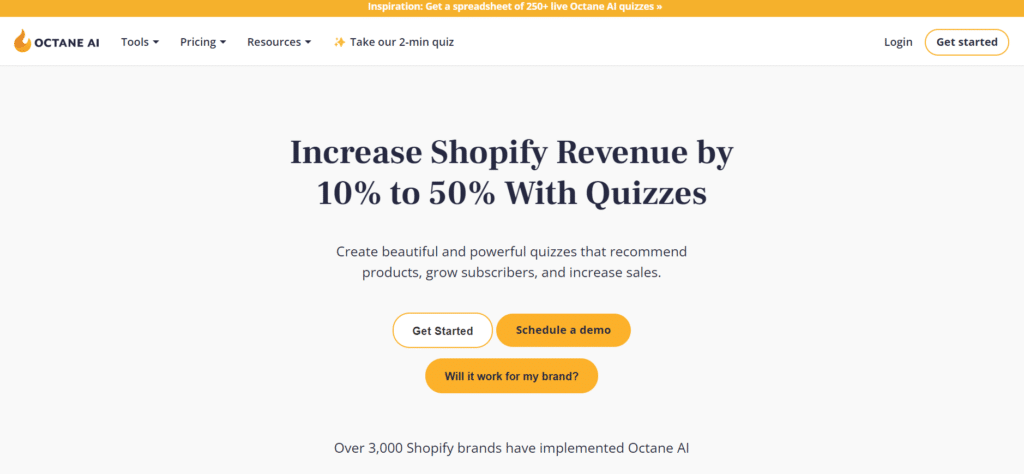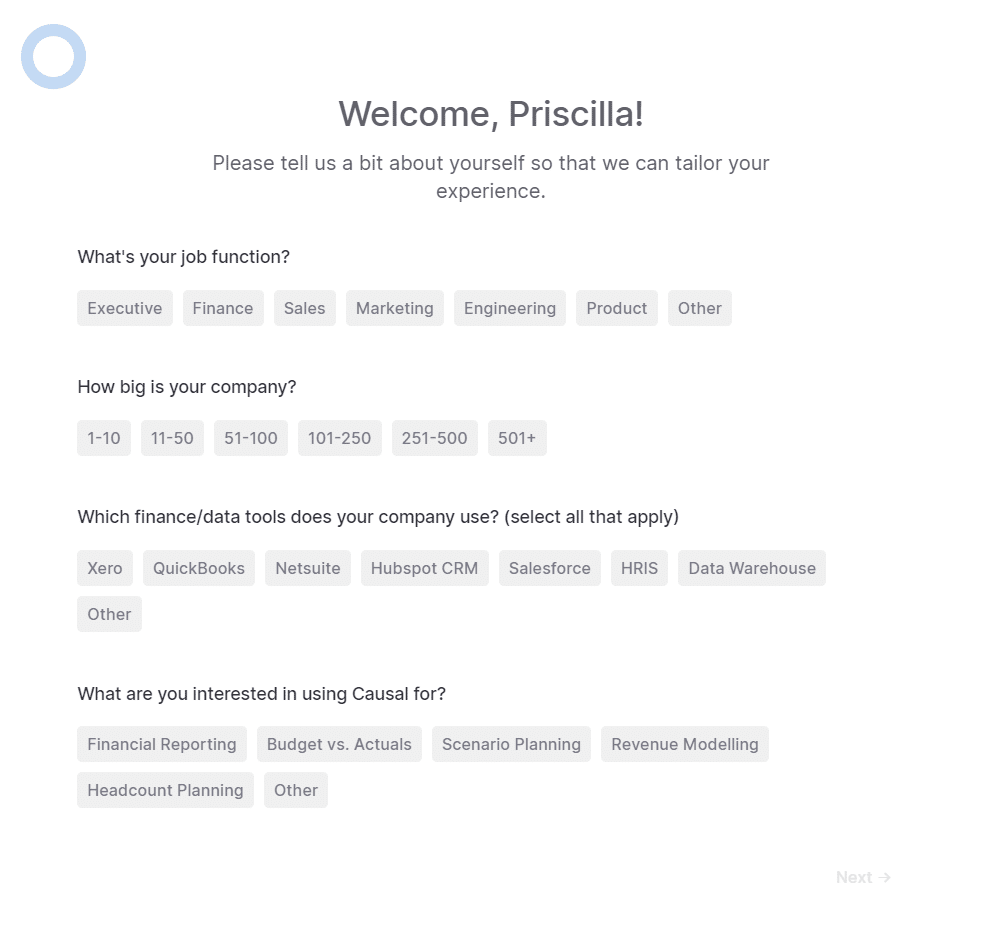Is your data truly zero-party data?
In this guide, we’ll demystify what zero-party data is, why it matters, and how three B2B companies approach their zero-party data collection strategy in today’s world of personalization.
What is Zero-Party Data?
Zero-party data (also known as customer-first data) is data customers directly and voluntarily share about themselves through sources like quizzes, website pop-ups, and DMs on social media platforms.
Common examples of zero-party data include:
- Interests and hobbies
- Purchase intents
- Communication preferences
What is First-Party Data?
First-party data is data customers share during a transaction (e.g., customer adding shipping information at the checkout page).
First-party data also refers to data collected during a behavioral analysis—like when you analyze a lead’s website activity to determine if they show purchase intent.
Difference Between Zero Party Data and First Party Data
While zero-party data offers valuable insights that personalize your marketing efforts, first-party data segments your customers in the right buckets and predicts their future behavior.
Here’s a snapshot that details the core differences between zero-party data and first-party data:

Second-party data is similar to first-party data, except that the data is acquired from co-partners (e.g., social media profiles) instead of directly from the customer.
And lastly, third-party data is data gathered from multiple sources that don’t have a direct relationship with the customer. Think: Clearbit, Zoominfo.
Benefits of Zero-Party Data (And One Tiny Roadblock)
The biggest upside of zero-party data is customer consent.
Since it’s data voluntarily provided from customers, you don’t need to worry about breaking any data protection or privacy laws—provided there’s transparency to how you use the data, of course.
Another advantage of zero-party data is its near-perfect accuracy. But with people changing jobs around 12 times in their lifetime, there’s bound to be accuracy issues at some point.
And that’s worrying, because dirty data causes high bounce rates, spam traps, and deliverability issues. On average, U.S. respondents feel inaccurate and incomplete customer data wasted 27% of their revenue.
To filter out invalid email addresses in your list, use our free email verifier.
Here’s how it works:
- Connect HubSpot
- Select an email list with up to 10,000 contacts
- Click Verify

It will score and include more information about the email addresses. In the example above, it details the format, whether it’s a free or business email address, etc.
How 3 B2B Brands Collect Zero-Party Data
Watch how these three B2B SaaS startups approach their zero-party data collection.
1. Digizuite
How it collects zero-party data: On-demand webinar

Digizuite is a digital asset management (DAM) suite that organizes marketing assets and distributes them to the channels of your choice.
Check out its webinar landing page above.
At first glance, nothing seems out of the ordinary.
But here’s where it gets interesting.
Why Digizuite’s zero-party data strategy stands out:
After requesting potential customers’ basic information in the opt-in form, Digizuite asks an open-ended question:
“What is the biggest challenge you face when managing digital assets?”
It’s an excellent way to gather input on your customers’ struggles in their own words.
Not only does the zero-party data inform the messaging on the product page, but it also helps the:
- AE from the sales team tailor the demo sales pitch and product recommendations accordingly
- Software developers improve product development, and
- Marketing teams determine future marketing campaigns (e.g., plan content marketing strategy at the top and middle of the funnel, decide which marketing channels have their target audience)
Key takeaway: Ask open-ended questions to gather in-depth customer input
2. Octane AI
How it collects zero-party data: Quizzes

Octane AI is a product quizzes platform for Shopify stores to increase conversions through personalized quizzes and conversational pop-ups.
The startup gathers zero-party data in two lead magnets:
- 250+ live quizzes spreadsheet shown in top yellow bar–targets users at the interest and intent stage
- Two-minute quiz shown in the top menu, website pop-up, and call-to-action yellow button (“Will it work for my brand?”)–targets users in the consideration stage
Unlike the spreadsheet that only collects the prospect’s email address, the two-minute quiz goes further.
Once clicked, Octane AI prompts you to answer a series of questions, including the type of products sold, marketing and sales tools in your stack, the number of monthly orders, and the average order value.
Why Octane AI’s zero-party data strategy stands out:
Octane AI offers value upfront. After completing the quiz, users receive a personalized marketing strategy. Note how Octane AI customizes the tips based on users’ responses, positioning how its tool can help increase their store sales.

The secret to making this zero-party data strategy work?
Identify the irresistible value you’re offering and think about how you present it, according to Elliott Brown, an advisor and marketing consultant for early-stage startups.
“Will prospects hand over their information for a free quote?” asks Brown.
“Or will an expert assessment be more attractive? Will exclusive research be more appealing than a white paper? When you offer something more valuable, it increases the likelihood of your audience taking action.”
While you’re at it, include social sharing buttons on your quiz results landing page.
Bryan Philips, head of marketing at In Motion Marketing, shares with us, “Users who share their quiz results on social media provide your business with free exposure and more customer data.”
Key takeaway: Create a valuable lead magnet—one that solves your target audience's problem—to increase conversions
2. Causal
How it collects zero-party data: Onboarding

Causal is a modern business planning platform.
The startup, which operates on a freemium acquisition model, collects zero-party data during onboarding.
Note how it immediately asks new users about their job function, size of company, finance tools used, and goal of using the business planning platform.

Causal brings to mind Notion’s strategy, as previously shared in our product-led growth guide. Both companies collect essential information about the user and use it to create a personalized experience.
Why Causal’s zero-party data strategy stands out:
By gathering this information upfront, Causal segments users into the right groups and tailors the customer experience based on their unique functional role, ultimately increasing activation.
“When customers trust your brand enough to provide such meaningful data,” says Chris Gadek, VP of growth at AdQuick. “You don’t have to do a lot of guesswork to figure out what they want.”
Causal then sends relevant email newsletters to nurture these free users to paying customers.
Successful conversion largely boils down to pitching at the right time.
In this case, use a lead scoring tool like Breadcrumbs to identify sales-ready leads, kick-start your sales conversations, and accelerate revenue across all stages.
Here’s how you can get started:
- Connect your CRM with Breadcrumbs
- Add your customer demographic in the Fit model (e.g., job title, number of employees)
- Share your buying signals in the Activity model (e.g., multiple visits to the pricing page within a week)

Set it live.
Breadcrumbs will send all scoring information to your connected data source and notify you of the sales opportunity on autopilot.
You can also build other vital scoring models on Breadcrumbs. Identify loyal customers with upselling or cross-selling potential and catch churn before it happens—all in the same place.
Start your free plan on Breadcrumbs today.
Key takeaway: Collect zero-party data right out of the gate in onboarding.
Zero-party data is nothing new
These three B2B companies showed us the powerful impact of using zero-party data.
Whether you’re looking to create a new content strategy, improve onboarding, or increase sales, zero-party data is a goldmine for personalized engagement.
